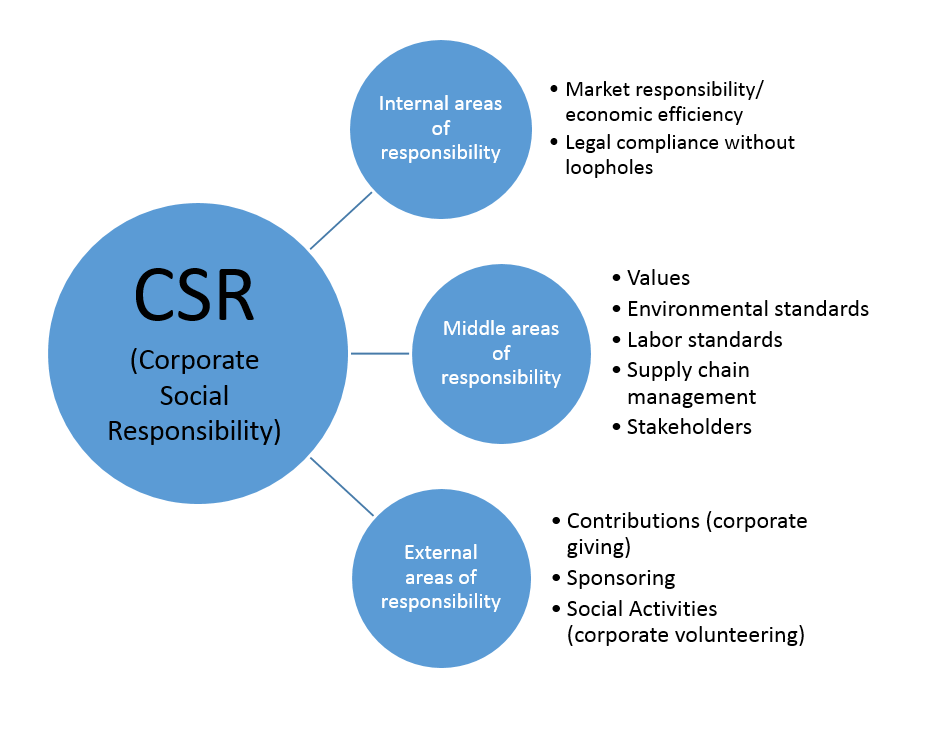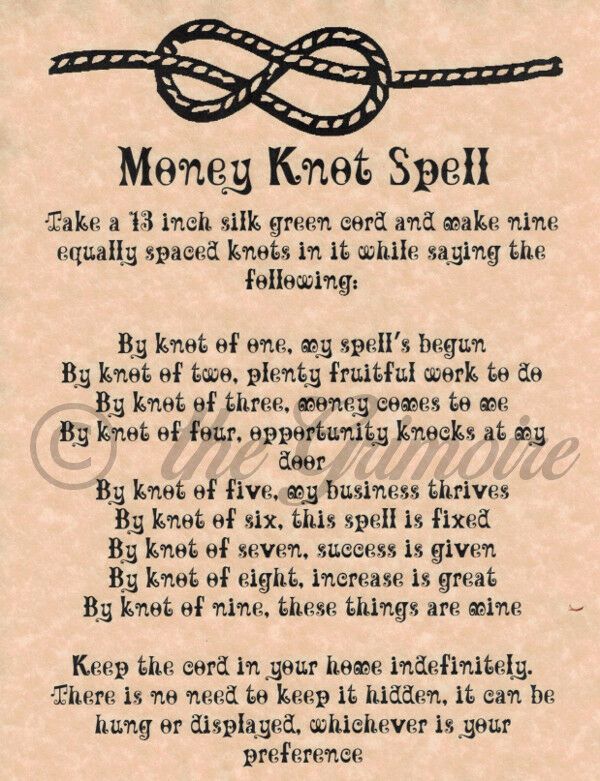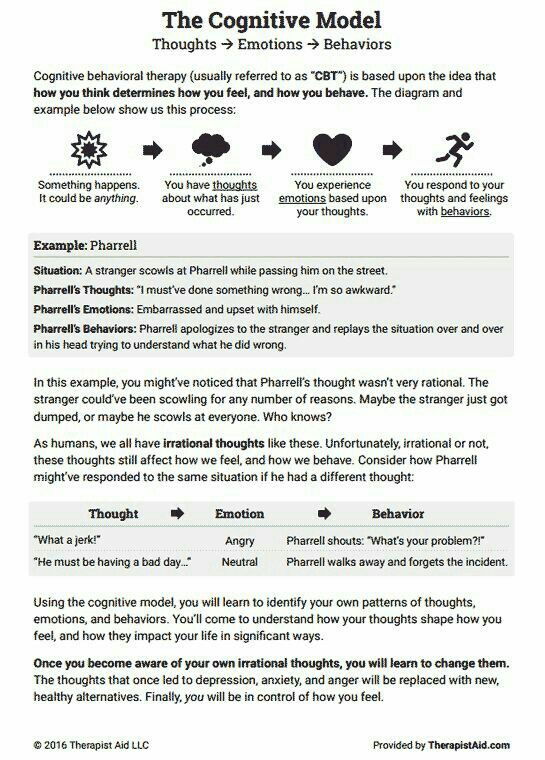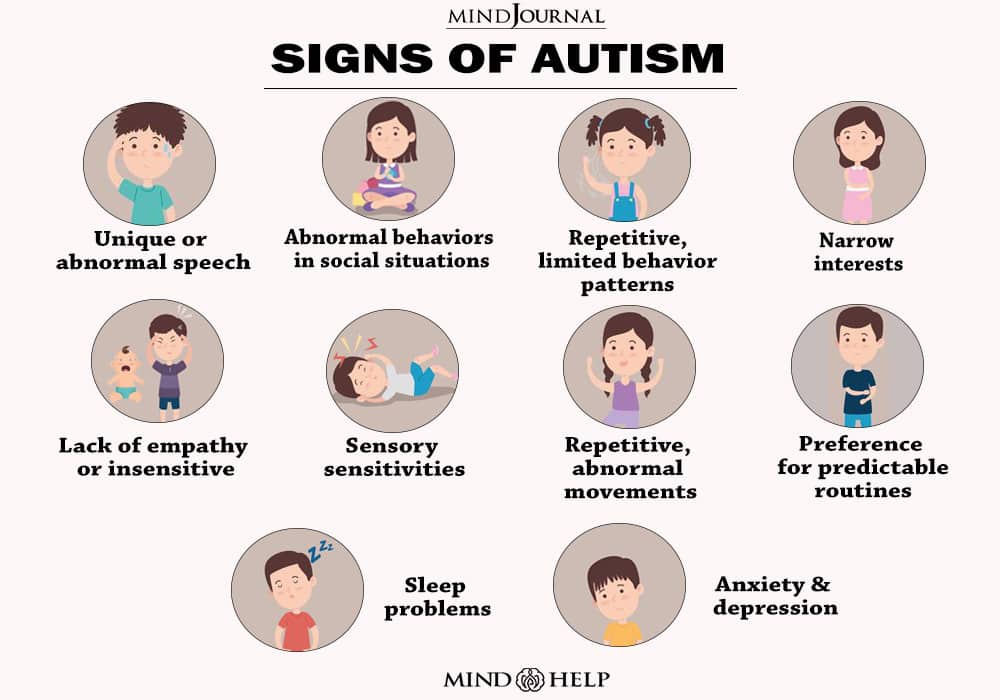Binary vs nonbinary
Understanding Non-Binary People: How to Be Respectful and Supportive
Non-Binary Defined
Most people – including most transgender people – are either male or female. But some people don't neatly fit into the categories of "man" or "woman," or “male” or “female.” For example, some people have a gender that blends elements of being a man or a woman, or a gender that is different than either male or female. Some people don't identify with any gender. Some people's gender changes over time.
People whose gender is not male or female use many different terms to describe themselves, with non-binary being one of the most common. Other terms include genderqueer, agender, bigender, and more. None of these terms mean exactly the same thing – but all speak to an experience of gender that is not simply male or female.
(Note: NCTE uses both the adjectives “male” and “female” and the nouns “man” and “woman” to refer to a person’s gender identity. )
Why “Non-Binary”?
Some societies – like ours – tend to recognize just two genders, male and female. The idea that there are only two genders is sometimes called a “gender binary,” because binary means “having two parts” (male and female). Therefore, “non-binary” is one term people use to describe genders that don’t fall into one of these two categories, male or female.
Basic Facts about Non-Binary People
Non-binary people are nothing new. Non-binary people aren’t confused about their gender identity or following a new fad – non-binary identities have been recognized for millennia by cultures and societies around the world.
Some, but not all, non-binary people undergo medical procedures to make their bodies more congruent with their gender identity. While not all non-binary people need medical care to live a fulfilling life, it’s critical and even life-saving for many.
Most transgender people are not non-binary.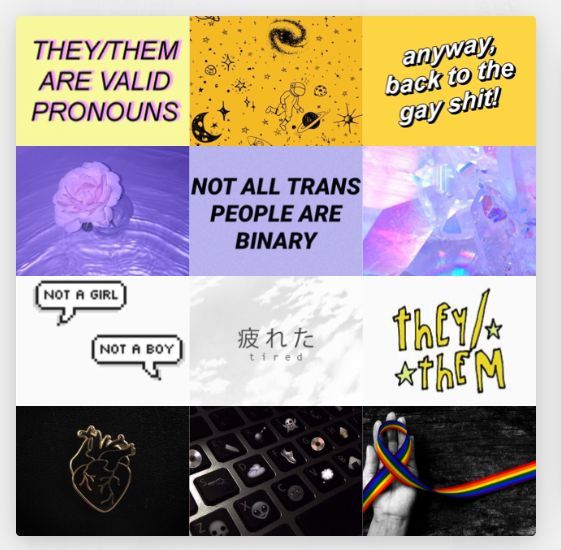 While some transgender people are non-binary, most transgender people have a gender identity that is either male or female, and should be treated like any other man or woman.
While some transgender people are non-binary, most transgender people have a gender identity that is either male or female, and should be treated like any other man or woman.
Being non-binary is not the same thing as being intersex. Intersex people have anatomy or genes that don’t fit typical definitions of male and female. Most intersex people identify as either men or women. Non-binary people are usually not intersex: they’re usually born with bodies that may fit typical definitions of male and female, but their innate gender identity is something other than male or female.
How to Be Respectful and Supportive of Non-Binary People
It isn’t as hard as you might think to be supportive and respectful of non-binary people, even if you have just started to learn about them.
You don’t have to understand what it means for someone to be non-binary to respect them. Some people haven’t heard a lot about non-binary genders or have trouble understanding them, and that’s okay. But identities that some people don’t understand still deserve respect.
But identities that some people don’t understand still deserve respect.
Use the name a person asks you to use. This is one of the most critical aspects of being respectful of a non-binary person, as the name you may have been using may not reflect their gender identity. Don’t ask someone what their old name was.
Try not to make any assumptions about people’s gender. You can’t tell if someone is non-binary simply by looking at them, just like how you can’t tell if someone is transgender just by how they look.
If you’re not sure what pronouns someone uses, ask. Different non-binary people may use different pronouns. Many non-binary people use “they” while others use “he” or “she,” and still others use other pronouns. Asking whether someone should be referred to as “he,” “she,” “they,” or another pronoun may feel awkward at first, but is one of the simplest and most important ways to show respect for someone’s identity.
Advocate for non-binary friendly policies. It’s important for non-binary people to be able to live, dress and have their gender respected at work, at school and in public spaces.
It’s important for non-binary people to be able to live, dress and have their gender respected at work, at school and in public spaces.
Understand that, for many non-binary people, figuring out which bathroom to use can be challenging. For many non-binary people, using either the women’s or the men’s room might feel unsafe, because others may verbally harass them or even physically attack them. Non-binary people should be supported by being able to use the restroom that they believe they will be safest in.
Talk to non-binary people to learn more about who they are. There’s no one way to be non-binary. The best way to understand what it’s like to be non-binary is to talk with non-binary people and listen to their stories.
Related Links:
- About Transgender People
- Frequently Asked Questions About Transgender People
- Supporting the Transgender People in Your Life: A Guide to Being a Good Ally
I just came out as non-binary, here's what that means
My name's Arlo, and I’m transgender.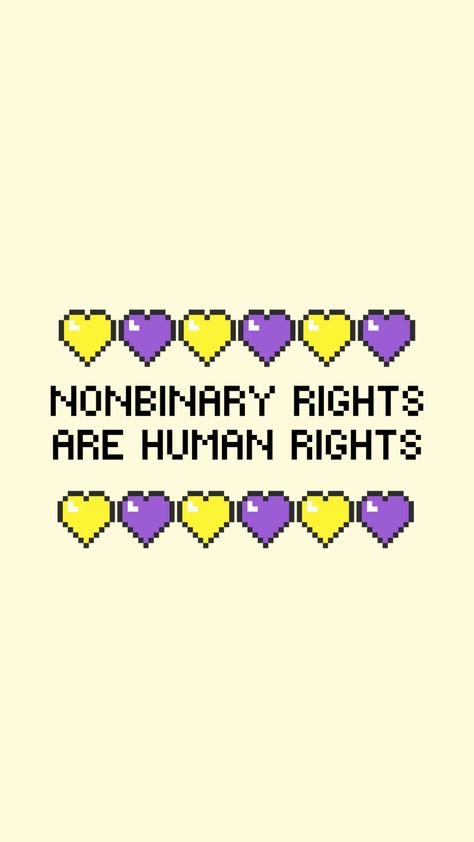 That means I don’t identify with the gender I was assigned at birth. I'm not a girl, and the thing is, I’m not a boy either. So the word I use to describe my gender is non-binary.
That means I don’t identify with the gender I was assigned at birth. I'm not a girl, and the thing is, I’m not a boy either. So the word I use to describe my gender is non-binary.
Here are some things you need to know to understand who I am.
What is the gender binary?
The gender binary is the Western concept that there are only two gender options: male or female. The most important thing to know about the gender binary is that it’s kind of a load of crap. Gender identity is one’s own internal experience and perception of self. And you know what? It's completely separate to one's sex.
What does non-binary mean?
In really simple terms, a non-binary person is someone who does not identify as exclusively a man or a woman. Someone who is non-binary might feel like a mix of genders, or like they have no gender at all.
Personally, I identify outside of the gender binary entirely. I am not a boy or girl at all. Some other non-binary people might identify partially with one or more of the binary genders – for example, a gender-fluid person (someone whose gender changes over time) who identifies as a girl sometimes and genderless other times. There are so many different ways to be non-binary, and we're all still valid and real!
There are so many different ways to be non-binary, and we're all still valid and real!
So, how different are you now?
In a lot of ways I’m same person that I’ve always been. If anything, I’m a more authentic version of myself now that I can be open with people in my life. Like everyone, I'm still figuring out exactly who I am, and as I keep finding what works best for me I'll ask my friends and family to change some things about how they treat me.
Here are some of the changes I have made. These might last for the rest of my life, they might not even last for the rest of the year. The important thing is that this is who I am right now, and although I know that linguistic shifts can take time to get used to, it means the absolute world to me when people strive to consciously change some of these habits to respect my identity.
Pronouns
Pronouns are the words that take place of a person’s name. Pronouns don't have a gender, but some people feel more comfortable with certain pronouns than others. I use the pronouns ‘they/them’ since they’re what fit me best. So if someone was talking about me, they'd say, "This is Arlo, they're awesome." or "Oh, Arlo - Yep I’ve met them before."
I use the pronouns ‘they/them’ since they’re what fit me best. So if someone was talking about me, they'd say, "This is Arlo, they're awesome." or "Oh, Arlo - Yep I’ve met them before."
Find out more about pronouns >>
They/them? Isn't that plural?
Nope! They/them can refer to a single person as well. You've probably done it before usually when you don't know someone's gender. You might say something like "Is your friend coming to the party? Do I need to know anything about them?” Using they/them to refer to just one person has been around for a long time - even Shakespeare did it.
Gendered language
A lot of our language is gendered. Mother, brother, boyfriend, actress – the list goes on. I'm a lot more comfortable when people use gender-neutral language when referring to me, ie. person, friend, human, kid, adult, champion. I know that these can seem clunky and odd at first, but it makes me feel a lot more comfortable when you use them. Using gender-neutral language means a lot to me (and a lot of other non-binary people!), and using them will start to feel more natural as you get used to them.
Using gender-neutral language means a lot to me (and a lot of other non-binary people!), and using them will start to feel more natural as you get used to them.
Phrases like 'ladies and gentlemen' are also gendered, and when we use them we exclude people who aren’t ladies and who aren’t gentlemen. Instead, try phrases like 'hey everyone', 'hey pals!' or 'distinguished guests'.
My name
Part of coming out as trans or non-binary for many people is choosing a new name (especially when an old name is a traditionally really gendered one). A lot of people know me by the name my parents called me when I was born, so it’s been a process for me to let them know about my new name: Arlo.
But there's the thing – it's worth the effort. Arlo is my name, and it's important to me that I have a name that reflects who I am. Inviting people to know me as Arlo, to know me for who I really am, is a step I'm so glad I was able to take.
What next?
These are just some of the things that might change when a non-binary person publicly affirms their gender.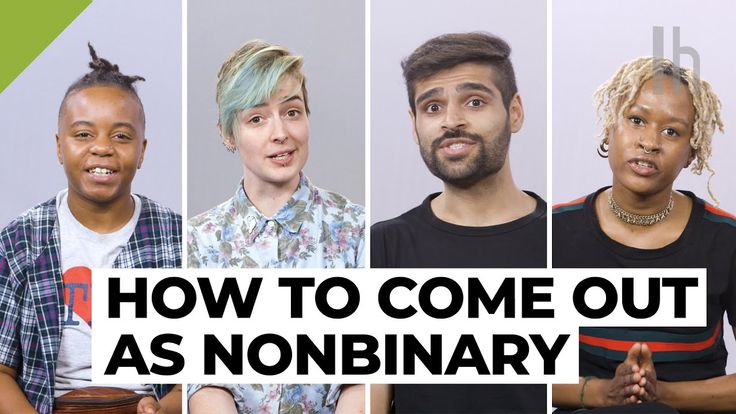 It can be difficult to work out exactly how you want to express yourself, and it can be difficult to adjust as people you know change. But it can also be a wonderful experience to celebrate your gender, the same way friends and family celebrate their own.
It can be difficult to work out exactly how you want to express yourself, and it can be difficult to adjust as people you know change. But it can also be a wonderful experience to celebrate your gender, the same way friends and family celebrate their own.
I've been lucky enough to know some phenomenal people who have supported me, and been completely excellent in using my pronouns and name. I couldn’t have got this far without them. And that’s what it really comes down to. It means the world to non-binary people when they are supported – it did for me!
Check out more Minus18 articles about gender identity >>
Beyond sex and gender: who are non-binary people
A certain number of people today declare that they clearly consider themselves neither men nor women. The sets of characteristics and behaviors fixed to each of the sexes do not allow them to feel comfortable in society. They think in terms of personality, not gender and social roles. We are talking about non-binary people.
We are talking about non-binary people.
For example, in Sweden both men and women are called neutral pronouns. In Argentina, the third version of gender 9 is allowed0012 “ I don't want to define “, and Germany will come to this by the end of the year. The theme of non-binary entered popular culture as well – a year ago, in the American series “Billions”, for the first time in the history of television, characters with a non-binary identity were shown.
WHO ARE SEX AND GENDER DENIAL PEOPLE?
“I feel comfortable being addressed in the feminine gender, but I don't have a gender. There are transgender people whose assigned biological sex at birth does not match their gender, a social construct. In theory I fall under this
is a term, but I don’t consider myself a member of the trans community ”, – says Katya Shilova , non-binary person.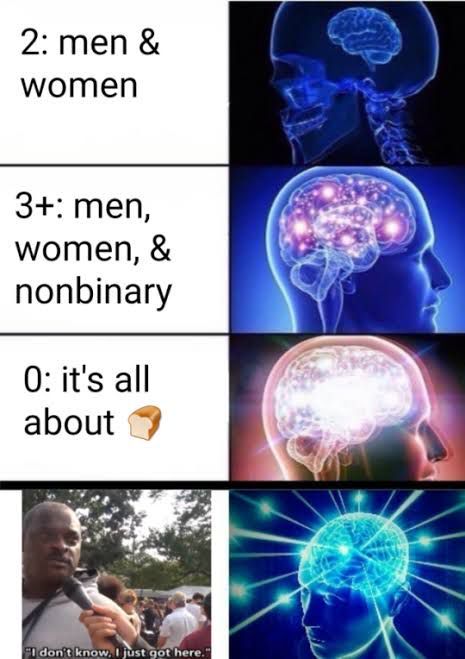
Non-binary people, or genderqueers, do not fit into the generally accepted system of two sexes. In such a system, gender expression that does not coincide with the standard ideas of male and female is prohibited. The general term non-binary also includes other people who identify themselves as agender or genderless (deny gender identity), androgynes (balance on the verge between male and female), bigenders (feel themselves either in the female or in the male field), gender fluids (“swim ” between all possible genera). nine0005
It is unknown how many non-binary people there are in the world. “We can only talk about the number of transgender people. Estimates at the global level show that they represent up to 1.1% of the adult population of reproductive age . Speaking about Ukraine, we can rely on the average number - 0.5%”, - states Igor Medved , coordinator of the human rights organization HPLGBT.
Katya Shilova took four years to feel comfortable in her non-binary status. At the age of 15, she fell in love with a girl. I couldn't take it for six months. She typed in a search engine “how to get rid of homosexuality”. But with the support of friends, she began to understand herself and study gender theory. nine0005
At the age of 15, she fell in love with a girl. I couldn't take it for six months. She typed in a search engine “how to get rid of homosexuality”. But with the support of friends, she began to understand herself and study gender theory. nine0005
“I found out that there are transgender people, and I thought that if I don't fall under everything feminine, then I must be a transgender guy. I was still trying to fit into the binary system. But when she tried on a male identity, she did not feel comfortable. And at some point I realized that it’s easier for me to talk about who I am not, and that the category of gender doesn’t suit me in principle,” says Katya.
“I DON'T WANT TO BE ASSOCIATED WITH MY GENDER SIGNS”
The main problem of a non-binary person is that they try to put him into one of two categories, asking “are you a girl or a boy?”. But there is no correct answer to this question. Loki J von Dorn is sure of this - an activist, creator of the Nonbinary. UA community, in which nonbinary people can learn more about themselves.
UA community, in which nonbinary people can learn more about themselves.
“The last thing I would like is to be associated with my sexual characteristics and to be emphasized in all public places, like when you have to choose a locker room or a toilet - male or female” - he says .
Loki says that he lives in discrimination every day, because his identity is invisible and absent in Ukrainian reality: “There are always people who deliberately challenge my right to self-identification and insist on their desire to call me whatever they want, and on what is right.”
Loki J von DornLoki uses the masculine pronoun for himself. But in the future, he would like not to receive questions about his gender at all, and to be perceived as a person in the first place. nine0005
HOW TO SPEAK TO NON-BINARY PEOPLE?
Non-binary people face misgendering every day: when they are called not by the pronouns that they themselves use in relation to themselves.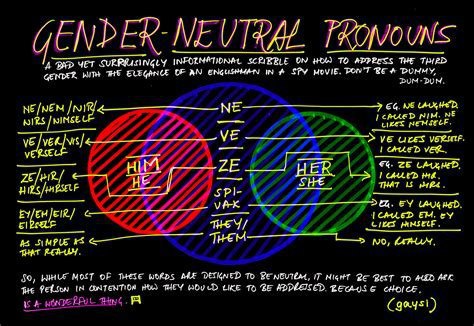 However, in many countries there are universal appeals that Ukraine could borrow.
However, in many countries there are universal appeals that Ukraine could borrow.
For example, most non-binary people in the UK prefer to refer to themselves as “they/them”. In English, these pronouns are widely used in relation to all people. Let's take a situation when a school announces the arrival of a new teacher, but who it is - a man or a woman - is not yet known. In English they would say: “We have a new teacher. They will come tomorrow.” Which in translation reads: “We have a new teacher. They will come tomorrow.” This does not mean that the teacher is a non-binary person, but only that it is not yet known what gender he is. And for the English language so familiar. nine0005
At the same time Sweden banned the generic pronouns “han/he” and “hon/she”. Regardless of gender, everyone became “hen”, that is, a neutral gender. A publication from the Swedish Institute explains:
“Proponents argue that the word “hen” avoids referring only to a specific gender or using the restrictive he/she forms, as well as expanding the language for those who may not consider themselves male or female, or those who do not want to be addressed on the basis of gender”. nine0013
nine0013
In Argentina and Nepal, a third gender was introduced in official documents - there is “he”, “she” and “I don’t want to define”. In Germany, before the end of 2018, amendments to the Constitution will be made, which imply the possibility of indicating in documents a different gender marker, except for male and female.
There is also a case in Canada where an 8-month-old baby was first issued a medical card without specifying the gender. Cyril Utley was born in November 2016 in British Columbia. The parent of the child, Corey Doty, does not consider himself to be either a woman or a man. He wants the child to consciously choose his gender identity. On the child’s medical record, in the column “gender”, they wrote the Latin letter U, which can mean either “indefinite” (undetermined) or “unidentified” (unassigned). Corey Doty is also trying to get the authorities to stop the baby's gender from being listed on the birth certificate. nine0005
In the Ukrainian and Russian languages, the culture of addressing non-binary people has not yet been formed.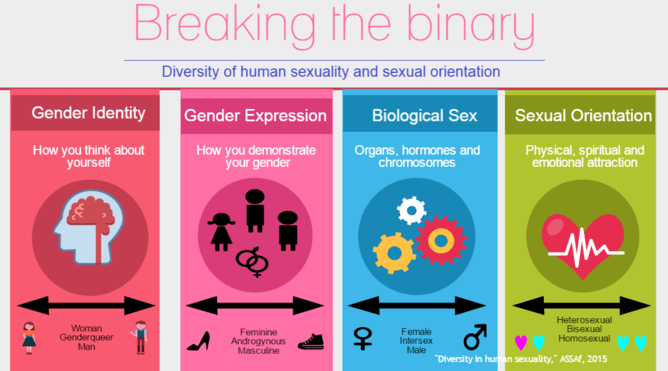 And the repetition of the Canadian experience at the moment is impossible in principle.
And the repetition of the Canadian experience at the moment is impossible in principle.
However, according to Loki, you can start small:
“ First of all, you should address any person with “you”. Firstly, it indicates respect and culture, and secondly, it prevents offensive perception. The question should be asked, “In what way should I contact you?” If communication has already begun and the person is correcting you, then you should listen and use the address that he asks for, even if it seems to you that the appearance or voice does not correspond to this ".
The material was written as part of the special project “Journalism of Tolerance”, created by the Kyiv Post and the Media Development Foundation with the support of the United States State Agency for International Development (USAID) and the organization “Internews”.
Non-binary people: who they are and how to contact them
From April 11, 2022, American citizens will be able to choose one of three genders, including non-binary X, when applying for a passport. featured
featured
- Who is
- What you need to know
- Types of non-binary personas
- How to communicate with them
Who is a non-binary person
A non-binary person is a person whose gender identity is neither feminine nor masculine. Initially, such people were called "genderqueer" (from the English queer - fake, fake, fake ). Over time, the term "genderqueer" has come to be used as a generic term for identities that transcend the traditional binary system. In 2014, “genderqueer” in the media was replaced by a more neutral concept of “non-binary gender”. nine0005
For the first time a non-binary character appeared on the big TV screen in the series "Billions". The role of the hedge fund star's hero was given to Asia Kate Dillon. In the series, they played a character that reflects their real gender identity. In 2018, Dillon was nominated for an Emmy Award for this role. True, the organizers had difficulties with the definition of gender.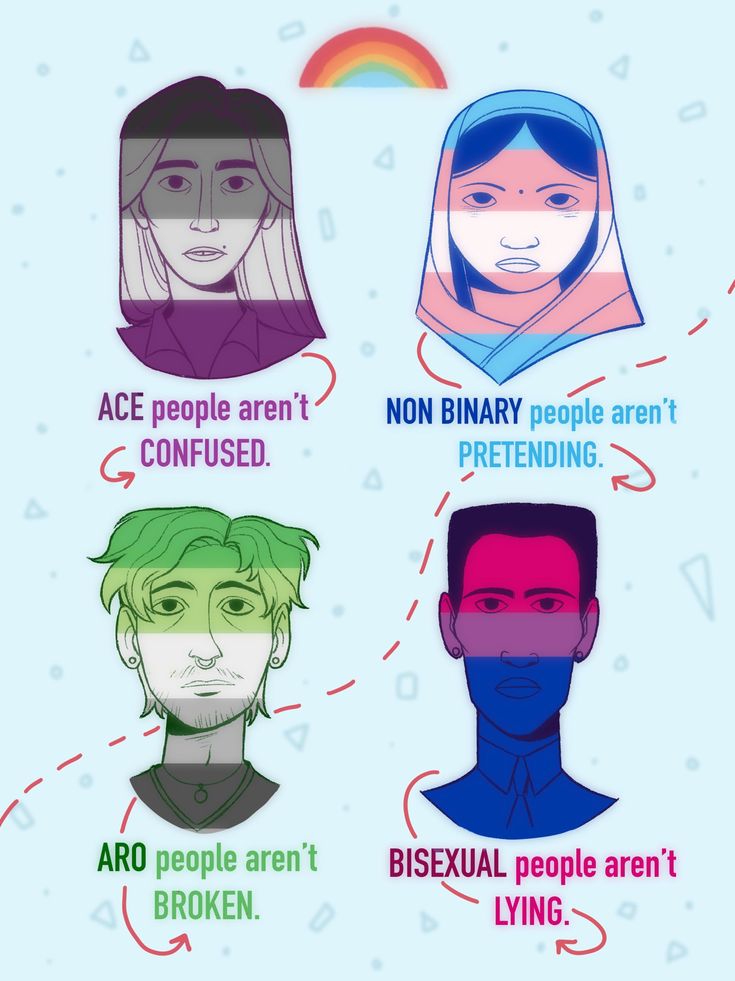 They sent a letter to Asia, in which they asked to clarify which nomination is closer: best actor or supporting actress. Asia preferred the first option because the word "actor" is gender neutral. There is also a non-binary character in the continuation of the Sex and the City series. Actress Sara Ramirez played podcast host Che Diaz. And in 2022, American figure skater Timothy LeDuc became the first athlete in the history of the Olympic Games to publicly declare his non-binary. nine0005
They sent a letter to Asia, in which they asked to clarify which nomination is closer: best actor or supporting actress. Asia preferred the first option because the word "actor" is gender neutral. There is also a non-binary character in the continuation of the Sex and the City series. Actress Sara Ramirez played podcast host Che Diaz. And in 2022, American figure skater Timothy LeDuc became the first athlete in the history of the Olympic Games to publicly declare his non-binary. nine0005
At the same time, non-binary as a phenomenon has a long history and was found in many Western cultures. For example, the Native American peoples of the United States believed that there were people who did not fit into the usual binary gender system. The Indians had five concepts or five genders: man, woman, man with two souls, woman with two souls, transgender. So, the Navajo tribe called people with two souls Nadleehi (changed), in Ojibwe there was the concept of Niizh Manidoowag (two spirits), and a person with two souls in the Cheyenne was called Hemaneh (half-man-half-woman).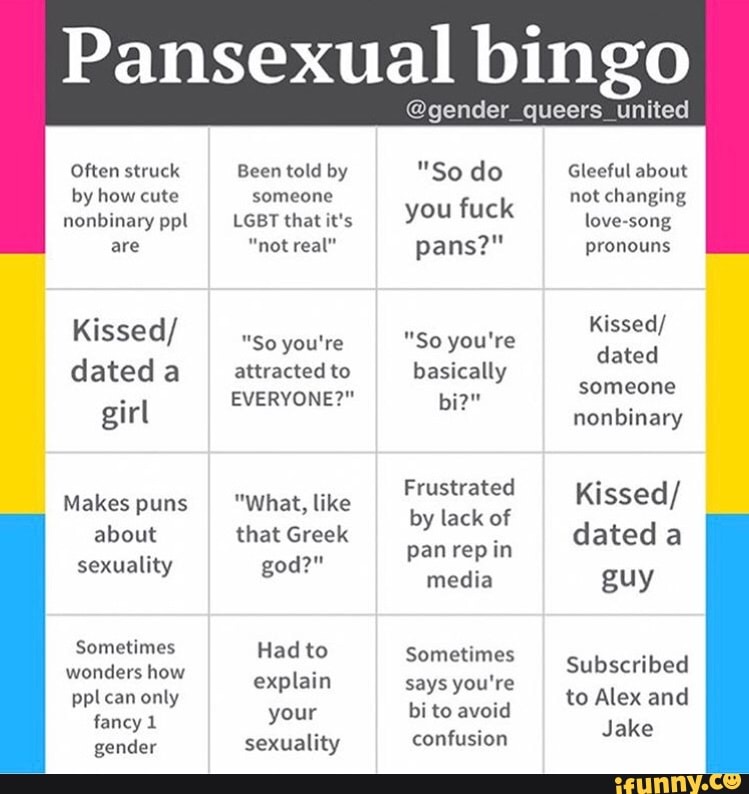 nine0005
nine0005
There is no information about the exact number of non-binary people in Russia. Experts believe that this is due to the specificity of the problem. Often such people have to hide their lives in order to avoid discrimination. But in some countries, statistics are freely available. According to a study by the Williams Institute at UCLA School of Law, 1.2 million LGBTQ+ people in the US identify as non-binary. Most of them are under 29 years old. The Williams Institute national poll also revealed other facts:
- 55% of non-binary people surveyed have been bullied, beaten, physically assaulted or sexually assaulted;
- 82% experienced emotional abuse as children;
- 53% reported being bullied as children;
- 11% of non-binary people were exposed to conversion therapy at an early age.
Conversion or reparative therapy is a non-scientific technique that aims to "correct" a person's sexual orientation. According to the UN, the main goal of such therapy is to help make the transition from non-heterosexuality to heterosexuality and from transgender or gender variability to cisgenderness.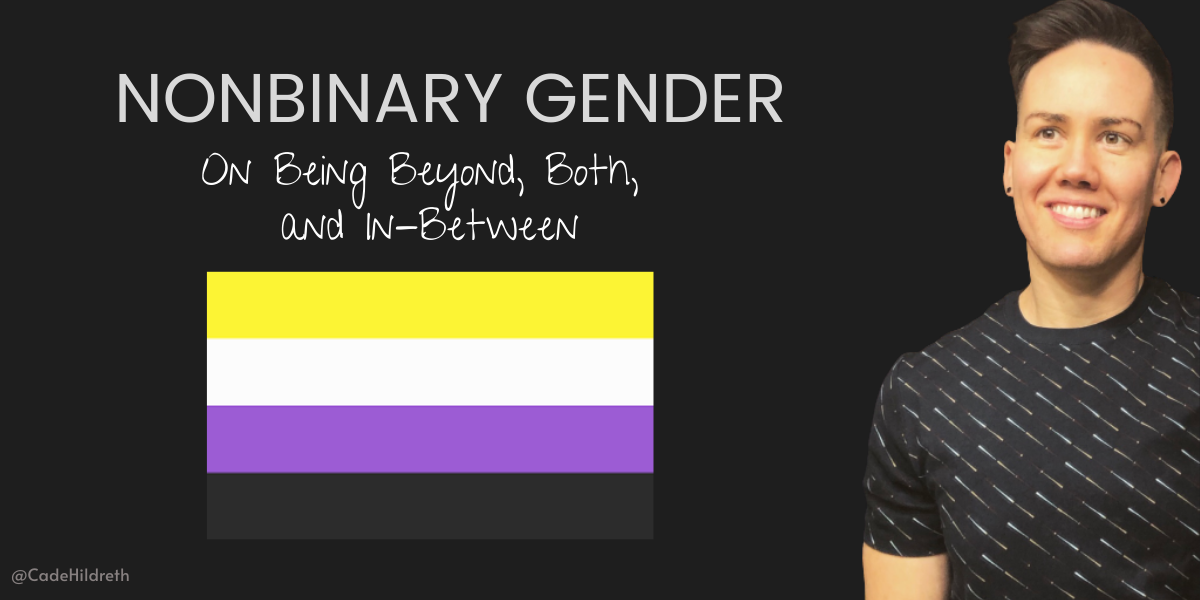 Experts managed to record the use of conversion therapy in at least 68 countries. For example, in 2015, the Inter-American Commission on Human Rights reported that in so-called “correction clinics” in Ecuador, girls were shackled, beaten, deprived of food, forced to be naked and left tied up for several days. In Nigeria, there have been cases of "healing" by pouring oil into the vagina. There is evidence that indicates that such patients are still being injected with drugs in Iran and the United States. They cause nausea or paralysis. Simultaneously with the introduction of narcotic drugs, erotic materials are shown on the big screen. nine0005
Experts managed to record the use of conversion therapy in at least 68 countries. For example, in 2015, the Inter-American Commission on Human Rights reported that in so-called “correction clinics” in Ecuador, girls were shackled, beaten, deprived of food, forced to be naked and left tied up for several days. In Nigeria, there have been cases of "healing" by pouring oil into the vagina. There is evidence that indicates that such patients are still being injected with drugs in Iran and the United States. They cause nausea or paralysis. Simultaneously with the introduction of narcotic drugs, erotic materials are shown on the big screen. nine0005
In 2012, the International Day of Visibility for Non-Binary People was born. It is celebrated on July 14th. The main goal is to talk about the problems that non-binary people face around the world. Some legal issues have already been resolved. So, from April 11, 2022, all American citizens will be able to choose one of three genders when applying for a passport, including non-binary X.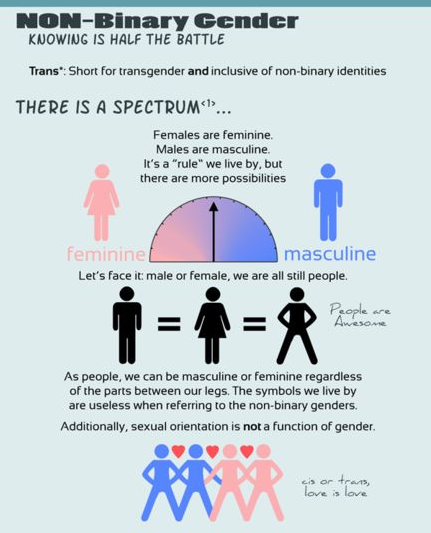 Gender-neutral passports are also issued in Australia, New Zealand, Nepal, Canada, the Netherlands and Argentina.
Gender-neutral passports are also issued in Australia, New Zealand, Nepal, Canada, the Netherlands and Argentina.
Non-binary persons also have their own flag. It was created by activist Kai Rowan in 2014. The yellow line represents those whose gender is outside the binary system. The white line represents people of all genders. The purple line represents those whose gender identity is somewhere between masculine and feminine or a mixture of both. The black line symbolizes people outside of gender.
Photo: wikipedia.org
What you need to know about non-binary people
The very word "gender" appeared thanks to the sexologist John Money. At 19In 1955, in his works, he proposed to separate the biological sex of a person from his role in society. After all, sex and gender are not the same thing. We analyze the basic concepts with the help of the MSD medical reference book.
- Gender - the biological status of a person. It is determined by medical professionals, focusing on the primary and secondary sexual characteristics of the child.
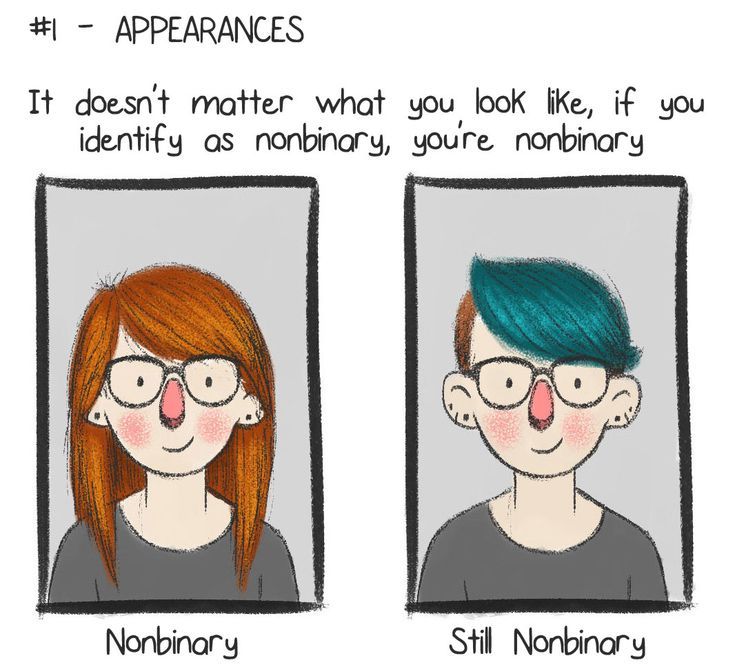
- Gender identity - a sense of belonging to a particular gender. A person decides how to define himself: a man, a woman, a transgender or another term. At the same time, gender identity has nothing to do with sexual orientation. That is, a non-binary person can classify himself as any gender, but at the same time remain heterosexual. nine0126
- Sexual identity is a person's sexual preferences.
- Gender identity - the individual's feeling of being a boy or a girl, a man or a woman.
- Gender role - public expression of gender identity.
- Transgender - a discrepancy between a person's gender identity and the sex assigned to him at birth.
Are non-binary people born or made? nine0195
According to experts, biological factors (gene set, prenatal hormonal environment ) largely determine a person's gender identity. Scientists even conducted a study of the brain, which confirmed this fact.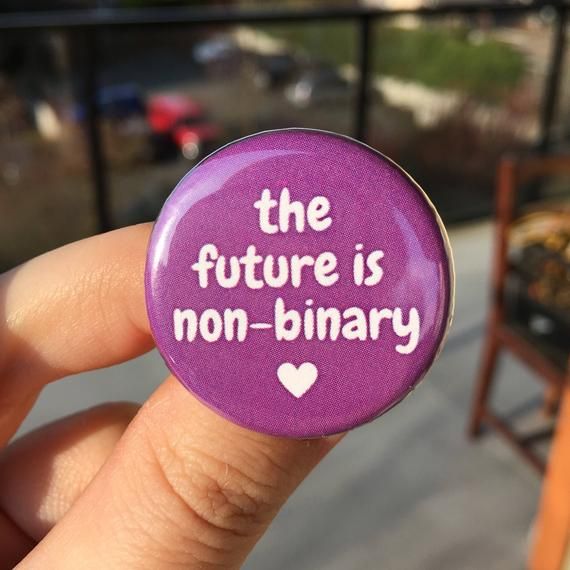 However, social factors also influence a person's gender identity and gender role. For example, the nature of the emotional connection with the parents and the relationship of each parent with the child.
However, social factors also influence a person's gender identity and gender role. For example, the nature of the emotional connection with the parents and the relationship of each parent with the child.
Are non-binary people intersex?
According to the classical binary system, there are only two genders: male and female. But there is another category of people that does not fit into the usual framework. Such persons are called intersex. In their case, gender choice is not a problem of self-identity and self-perception, but a medical feature.
Intersex people are usually called people who have pathologies of the development of the genital organs or genetic abnormalities. According to the UN, up to 1.7% of children are born with gender characteristics that do not fit into traditional binary representations. At the same time, in many countries intersex children are still prescribed procedures and operations that are aimed at changing their sexual characteristics and appearance.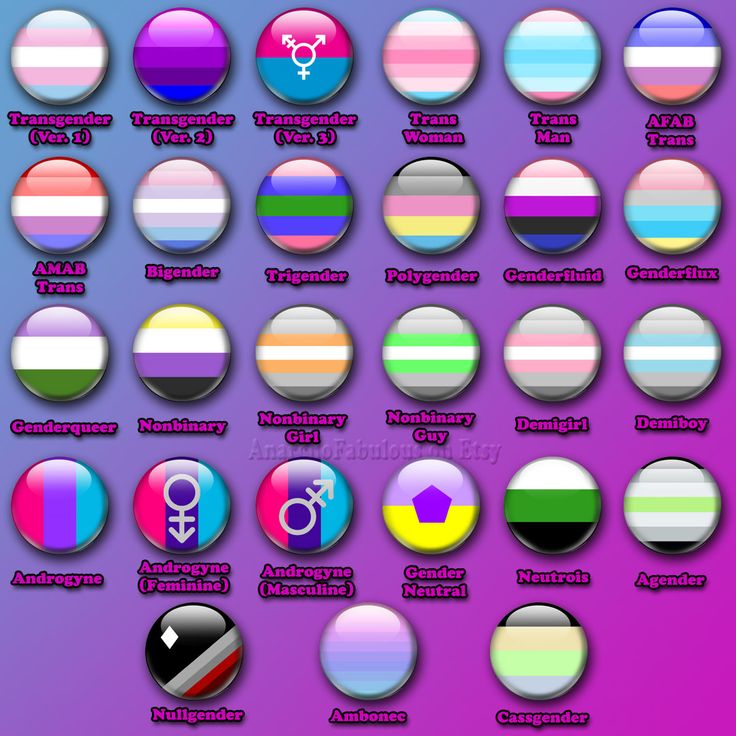 The UN opposes such measures, noting that these actions violate their rights, and such interventions cause physical and psychological suffering. nine0005
The UN opposes such measures, noting that these actions violate their rights, and such interventions cause physical and psychological suffering. nine0005
Are non-binary people transgender?
Non-binary and transgender people are generally categorized as transgender. But these concepts should not be confused.
Dmitry Palatnik, life coach who works with LGBTQ+ people, queer researcher, hypnotherapist:
“These people often change their self-perception and self-definition in LGBTQ+. This can happen on the path of self-awareness, depending on how they perceive themselves at the moment. On the example of transgender people: a person goes through several phases. The first is complete denial and, to some extent, internal transphobia. The person does not want to associate themselves with the LGBTQ+ community at this stage. The next phase is when a person realizes that he still belongs to some category of LGBTQ+, but cannot decide, and can begin to consider himself an agender.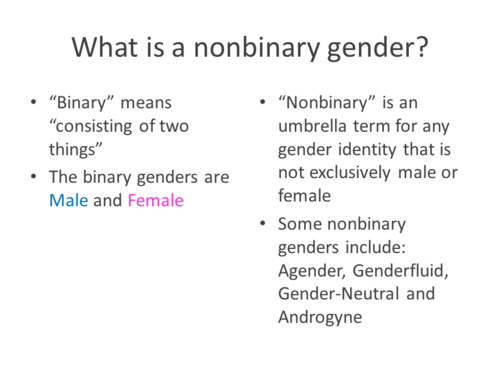 In the next phase, a transgender person may consider himself non-binary, since he definitely does not “fit in” with the gender with which he was born, but also does not “hold out” to the desired gender. The category of non-binary people often includes those who, for some reason, do not want or cannot make the transition, but at the same time do not want to be perceived as belonging to the gender with which they were born or which is now in their passport / birth certificate. nine0005
In the next phase, a transgender person may consider himself non-binary, since he definitely does not “fit in” with the gender with which he was born, but also does not “hold out” to the desired gender. The category of non-binary people often includes those who, for some reason, do not want or cannot make the transition, but at the same time do not want to be perceived as belonging to the gender with which they were born or which is now in their passport / birth certificate. nine0005
How to distinguish a non-binary person by external signs?
It is impossible to distinguish a non-binary person by external signs. The only way is communication. During the conversation, you need to follow the pronouns that the interlocutor uses. But not always they can act as an indicator of his gender. It's also not worth asking direct questions. If a person wants, then he himself will raise this topic and open up to you.
Types of non-binary personas
As we wrote above, non-binary persona is a general concept that covers all people whose gender identity is neither female nor male. But even among them there is a division. Let's imagine the main types of non-binary people. nine0005
But even among them there is a division. Let's imagine the main types of non-binary people. nine0005
- Agender . Such a person either has no gender identity at all, or is indescribable. An example of an agender is hip-hop artist Angel Hayes. In 2016, the musician admitted that she considers herself asexual and does not belong to any gender.
- Bigender . Such person is a bearer of two genders. And if a person relates himself to all identities, then he will already be a pangender. nine0125 Demi-genders (demi-boy or demi-girl). A person who only partially identifies with one gender. It does not matter with what primary or secondary sexual characteristics he was born.
- Genderqueer. Persons of this type try to abandon all gender stereotypes. Genderqueer is The Crown star Emma Corrin. She announced this publicly in 2021.
- Genderfluid . In such people, gender identity is changeable and depends on the emotional state at a certain period of life.
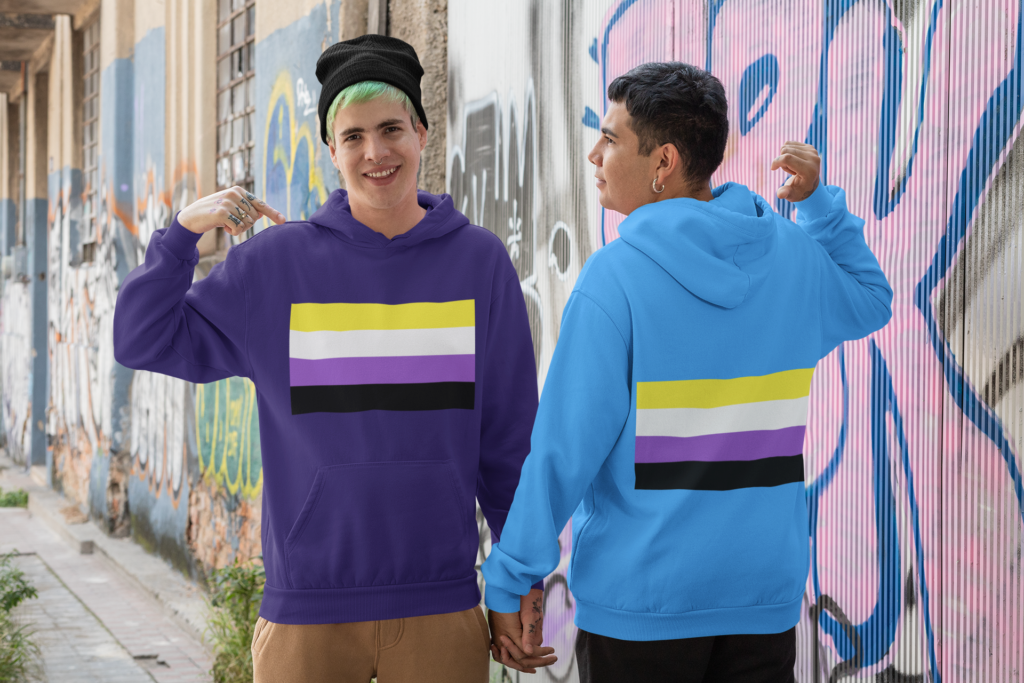 So, British model and actress Cara Delevingne belongs to gender fluids. Model, TV actress Ruby Rose is also a gender fluid. She spoke about her fluid gender identity back in 2014. nine0126
So, British model and actress Cara Delevingne belongs to gender fluids. Model, TV actress Ruby Rose is also a gender fluid. She spoke about her fluid gender identity back in 2014. nine0126
How to communicate with non-binary people
Non-binary gender creates some linguistic and philological difficulties. How to deal with such people?
Dmitry Palatnik:
“First of all, I would like to note that non-binary and transgender people react very painfully to misgendering (when people around them confuse their gender). Therefore, it is important at the beginning of the conversation to immediately ask a non-binary person how to address him, what name to call him. By the appearance of a person, it is impossible to understand what kind of treatment will be comfortable for him. You may encounter people who look very feminine, but want to be addressed with "he", or, conversely, not addressed at all or use the pronouns "you", "they". nine0005
If, upon first contact with a non-binary person, it was not immediately possible to clarify which pronouns or name are comfortable for him, it is better to avoid phrases with a gender marker and not use pronouns in a conversation.
